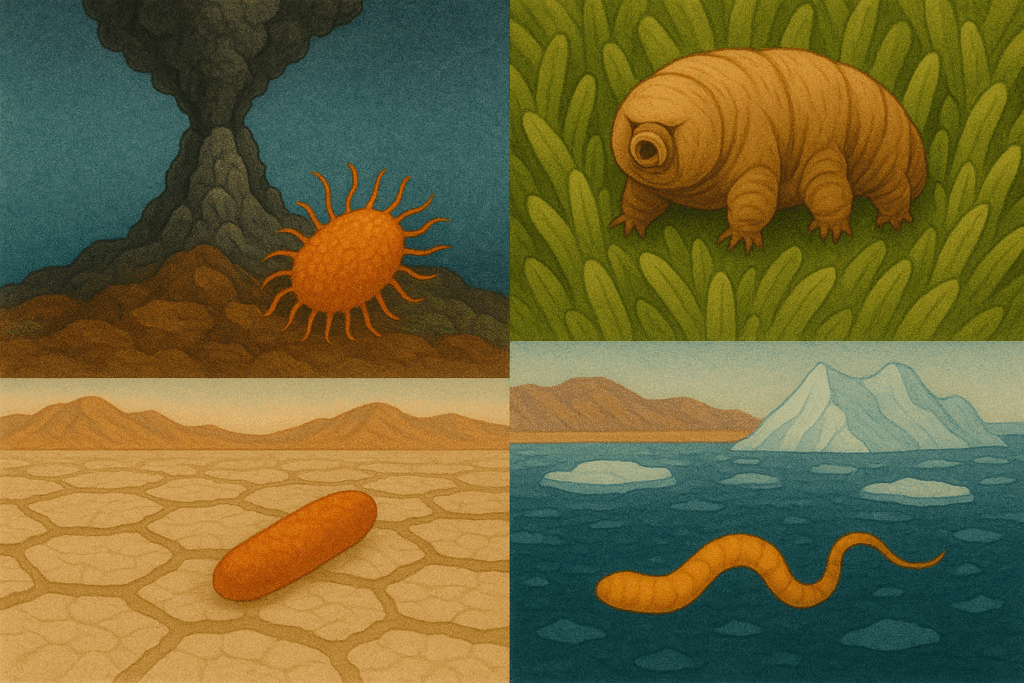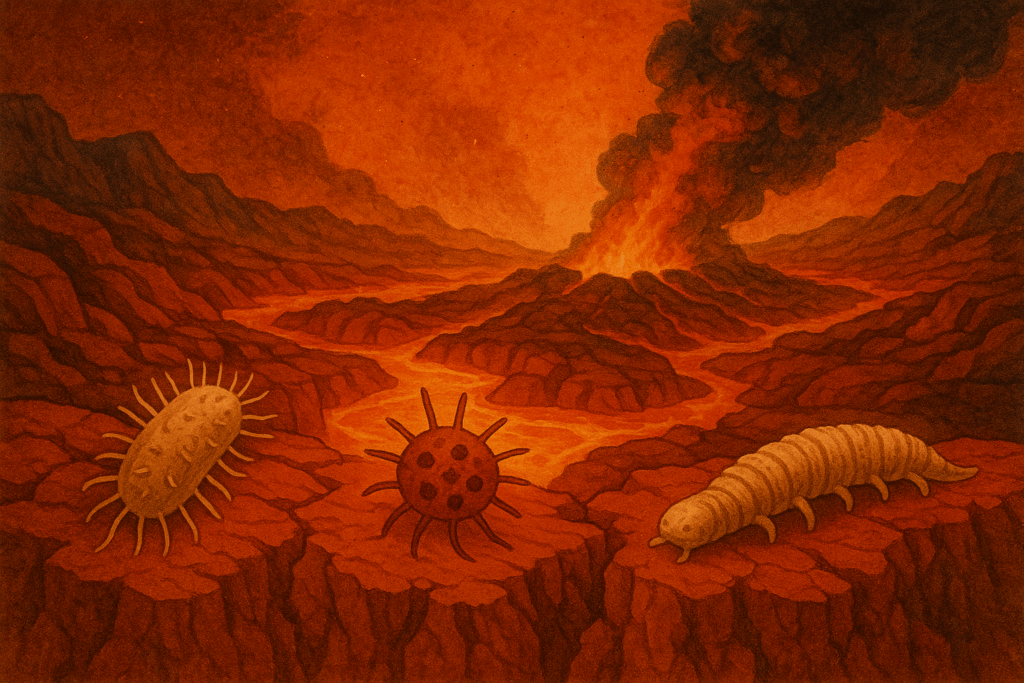Life at the Limit: The World of Extremophiles
By María José Ramírez

The search for extraterrestrial life has been one of humanity’s greatest drives. Since ancient times, we have wondered: is Earth the only planet with life? This question has been a topic of conversation and study for thousands of years, especially considering the harsh and vastly different conditions found on other planets. But what if the answer isn’t as far away as we may think? What if, on our own planet, there are organisms capable of shedding light on this incredible mystery?
An extremophile is an organism with the ability to survive in extreme conditions relative to us. These beings can adapt to hostile environments with high salinity, extreme temperatures, high pressure, or even intense levels of radiation. Generally, they are microorganisms such as bacteria, although there have been cases of animals and plants being considered as extremophiles as well.
Extremophiles are divided into various types, depending on the extreme environment in which they manage to survive or thrive. Thermophiles, for example, thrive at very high temperatures—like those in geysers or hot springs—enduring more than 100°C without their vital functions being affected. Halophiles, on the other hand, require environments with extremely high salt content, such as the Dead Sea, and have developed adaptations to maintain their cellular structure in these hostile settings. Psychrophiles live in extreme cold conditions, like at the poles or most of the ocean floor, producing special proteins that prevent their insides from freezing. There are also acidophiles, capable of surviving in environments more acidic than battery acid, and alkaliphiles, which tolerate environments as basic as ammonia. Lastly, organisms like Deinococcus radiodurans (whose name literally means “terrible berry that can withstand radiation”) are able to withstand very high levels of radiation thanks to unique genetic repair systems. These beings challenge our idea of what it means to be “alive.”

Precisely because of their ability to survive in extreme conditions, extremophiles have become key elements in the search for life beyond Earth. Their resilience has significantly expanded the scope of environments considered potentially habitable, showing that life can adapt to very diverse conditions—even those that at first glance seem truly uninhabitable. Thanks to these discoveries, astrobiology no longer focuses solely on Earth-like planets; it now also considers worlds with supervolcanoes, underground oceans, frozen giants, or atmospheres rich in toxic substances. This opens new possibilities for the existence of life forms in extreme environments, among the millions of planets that exist in the universe.
Extremophiles not only deepen our understanding of the boundaries of life but also revolutionize the ways we seek it beyond our planet. Through the study of these resilient organisms, we know that life does not require perfect conditions, but rather the ability to adapt. In a vast universe filled with thousands of worlds yet to be explored, studying these organisms on Earth could be the vital key to discovering life in distant corners of the cosmos. If life can thrive in the most unforgiving places on our planet, then perhaps the universe itself is far more alive than we ever imagined.
María José Ramírez is a Data Science student from Guatemala. Her work combines her passion for astrobiology and data-driven research. She is also dedicated to science communication, inspiring young people to explore the wonders of space and the resilience of life.
